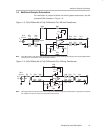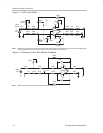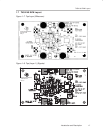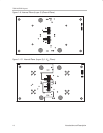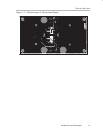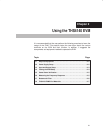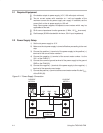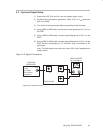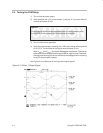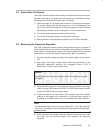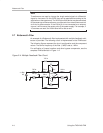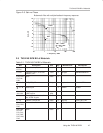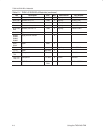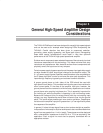
2-5
Using the THS4140 EVM
2.5 Power Down Verification
This EVM is used to evaluate devices with and without the shutdown function.
Therefore, this step is only applicable if the device has a shutdown function.
Please see the data sheet for power-down verification.
1) Insert the jumper JU1 to power down the device. The current consumption
(dc current meters) should drop to less than 1.5 mA. Remember to dis-
count the current flow through the 10-kΩ pullup resistor on the EVM when
calculating the device current consumption in the shutdown mode.
2) Turn off the power supply and disconnect the wiring.
3) Turn off the function generator and disconnect the wiring.
4) Basic operation of the operational amplifier and its EVM is complete.
2.6 Measuring the Frequency Response
This EVM is designed to easily interface with network analyzers. Jumpers J3
and J4 facilitate the use and insertion of the differential probes at the input and
output nodes. It is important to consider the following steps to ensure optimal
performance in terms of bandwidth, phase margin, gain, and peaking
1) Connect the power supply according to the power supply set up (section
2.2)
2) Use proper load values. Loads directly effect the performance of the
differential operational amplifier (the suggested value is 200 Ω
differentially, 100 Ω on each output node).
Caution:
Incorrect connections cause excessive current flow and may damage
the device.
3) Place the GND connection of the probe as close as possible to the output
nodes. Use the GND holes on the EVM. The GND holes create a shorter
route to the GND plane and output nodes.
4) Place the probe at the input nodes, set the power level of the network
analyzer to the proper level (information in the data sheet typically is
produced at –20 dBm power level), and calibrate the network analyzer.
Note:
If a differential probe is used, verify that resistors R1a, R1b, R4b, and R4a
are in place. The resistors are 0 Ω values providing the path to the differential
probe terminals.
5) Place the probe at the output nodes (if a differential probe is used, insert
the probe into the provided jumper), and measure the frequency
response.



